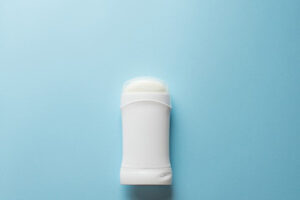Many people are choosing aluminum-free deodorant for the health and wellness benefits. Many believe that high levels of aluminum may contribute to breast cancer and Alzheimer’s disease.

These products allow you to sweat naturally, without blockages, and use clean ingredients that minimize odor. Remember that it takes a week for your body to adjust when you start using this kind of deodorant. Visit https://www.thelittlehomesteadco.com/ to learn more.
Aluminum is an ingredient in most antiperspirants that helps block sweat ducts and prevent it from reaching your underarm glands to mix with smell-producing bacteria. Some studies have linked high levels of aluminum with breast cancer and Alzheimer’s disease, so many people are choosing to switch to natural deodorants that do not contain this metal compound. You can now find dozens of products that promise to eliminate the risk of aluminum exposure in your armpits at stores and online shopping sites. These deodorants, which are often referred to as natural deodorants, come in sticks, sprays, gels, and even stones that you spritz or rub onto your skin.
When you purchase a product that claims to be natural or aluminum-free, it’s important to read the label carefully to see what else is in the formula. You may still be exposed to other chemicals or additives, so it’s best to stick with a brand that lists all of the ingredients on its website. Look for a roll-on or spray that does not have perfume or parabens, as well as one that does not contain other chemicals like talc and propylene glycol.
Another important consideration when selecting an aluminum free deodorant is whether or not it will work. Some brands do not contain enough of the right ingredients to keep you smelling fresh and dry throughout the day, which can lead to odors or unwanted wet spots on your clothing. In these cases, it’s helpful to have cleansing wipes in your bag or pocket that you can use as needed.
Some brands that promise to be aluminum-free offer a transition period for users to get used to the way they smell without the help of traditional antiperspirants. This can last a few weeks and can vary from person to person. During this time, it’s a good idea to wear white or light-colored clothes and apply the new deodorant several times a day.
Another advantage of purchasing an aluminum-free deodorant is the fact that it can be gentler on your skin than regular products. This is especially true if you choose to buy a deodorant made from goat milk, which is not only skin-friendly but has been found to have antibacterial properties.
No White Marks
Deodorants without aluminum are a huge grooming trend, with brands promoting their aluminum-free formulas for odor protection that doesn’t leave white marks or stain your clothes. These products typically avoid ingredients that tend to cake under your arms like baking soda and talc, and dry clear so they don’t leave pit stains on light shirts (like this one from Tom’s of Maine).
The no-white mark claim comes from the fact that the aluminum in antiperspirants interacts with the salt found in sweat to create those pesky white marks. This product doesn’t have that ingredient and is also free of parabens and perfume, which can irritate sensitive skin. The odor-fighting ingredients are lactic acid esters, which penetrate the underarms to counteract odor-causing bacteria.
Unlike aluminum-based antiperspirants, natural deodorants don’t block perspiration, so you may sweat a little more in the first week as your body adjusts to the new way of doing things. However, the best natural deodorants are made from plant-based or organic ingredients and use essential oils to reduce odor rather than heavy fragrances that can clog pores and cause irritation.
A few of the most popular natural deodorants for men include this one from Evolvetogether, which uses baking soda and tapioca starch to absorb moisture and odor. The product is gentle enough for sensitive skin and has a light scent of lemon, patchouli, and sage. The women’s version is a bit stronger and includes the same natural antiperspirant ingredients.
These roll-ons from Le Labo are another option for a non-toxic deodorant that keeps you fresh all day long. They use a combination of shea butter, arrowroot, and other natural ingredients to keep you smelling good (without any of the chemicals found in most conventional antiperspirants). They’re quick-drying and come in an array of fresh scents from rose petals to lavender.
The brand’s newest deodorant is a great-smelling, non-toxic choice for anyone looking to switch from aluminum-based antiperspirants. The slick gel formula goes on smoothly and doesn’t leave a sticky residue. The deep sea glacier scent is refreshing, and the formula doesn’t contain aluminum or baking soda. Plus, it’s vegan and not tested on animals.
No Baking Soda
A major selling point of aluminum free deodorants is that they don’t contain baking soda, which some people find irritating to the skin. But while baking soda does have some natural deodorizing properties, it can actually irritate sensitive armpits (as well as disrupt the delicate balance of your skin’s pH levels). Instead, look for formulas that incorporate other, more nourishing ingredients like coconut oil, shea butter, and beeswax for all-day odor protection that doesn’t come with any baking-soda side effects.
The good news is that while aluminum-free deodorants are a big trend in the grooming aisle, many of them do still work. It can just be a bit more difficult to find one that works for you, especially if you’re used to using antiperspirant and you’re not quite sure what to expect from a switch to clean or natural deodorant.
While there isn’t any definitive link between aluminum and cancer, many people choose to go aluminum free for the sake of their own health. Others simply want to reduce the amount of chemicals they put on their body and opt for a less toxic alternative that won’t interfere with the normal sweating process.
Whatever your reason, there’s no denying that aluminum-free deodorants have a place in any self-care routine. And if you’re wondering whether they really work, here are some of our favorites to help you make the best decision for your body and your budget.
The aluminum in conventional antiperspirants gets rubbed off onto your clothes during the day, leaving unsightly yellow or dark stains that can be difficult to get out. But aluminum-free formulas don’t leave behind any stains because they don’t contain any baking soda.
Despite what some may think, deodorants without aluminum don’t smell. Some, like this spray from Allure Editor-In-Chief Megababe, use a combination of advanced odor fighters and pH balancing minerals to keep you fresh all day long. Others, like this stick from Secret, are designed to eliminate odor rather than just cover it up with fragrance—and they do so effectively for 48 hours. And then there are the options that just do both, like this one from Dove, which uses zinc neodecanoate to neutralize odor and keep you dry without absorbing your sweat.
No Parabens
The “no paraben” claim may be a key selling point for some aluminum-free deodorants, but it’s important to read the full list of ingredients to understand what you’re putting on your skin. Some aluminum-free deodorants are still made with abrasive baking soda, fragrance and other common antiperspirant ingredients that can irritate sensitive underarm skin. At Wild, our aluminum free deodorant contains alternative and natural ingredients to keep you fresh without blocking your sweat glands or causing white marks on your underarms. We use tapioca starch to absorb your perspiration and bicarbonate of soda to kill the bacteria that cause body odour by breaking down the waste products they produce.
Many antiperspirants also contain a range of chemicals, including preservatives, which can disrupt the delicate microbiome on your skin’s surface. This can lead to irritation and can even alter the bacterial balance in your skin, which can be harmful for your overall health. Natural deodorants are often made without these chemicals and instead use safe, organic and vegan ingredients.
While it is true that aluminum does not cause cancer, for some people avoiding aluminum-based products can help to put their mind at rest. For this reason, some people choose to switch from antiperspirant to an aluminum-free deodorant, or use both in combination – with an antiperspirant on active days and a deodorant for everyday wear.
If you’re thinking of trying an aluminum-free deodorant, remember that the process of adjusting to a new deodorant can take some time. Your body will need to adjust to the way it naturally sweats, and some people report being sweatier or smellier while they’re making the transition to a natural product. However, most people find that a little trial and error will help them find the aluminum free deodorant that works for them.
It’s easy to find an aluminum-free deodorant that will work for you, but it’s important to consider your own personal needs and the ingredients that are best suited to your body. You’ll want to find a natural deodorant that fits your lifestyle and that has a fragrance you love.

